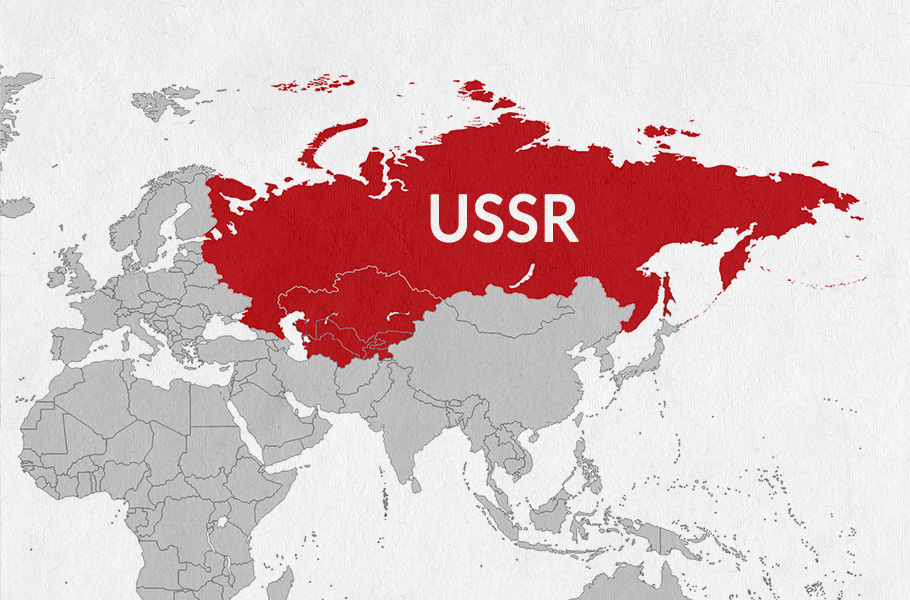
Introduction
The collapse of the Union of Soviet Socialist Republics (U.S.S.R.) and the subsequent democratization of Eastern Europe in the late 20th century marked a pivotal moment in world history. This epochal event reshaped the geopolitical landscape and ushered in a new era of political, social, and economic transformations. In this comprehensive discussion, we will explore the factors that led to the fall of the U.S.S.R. and the dissolution of the communist Warsaw Pact, focusing on key countries such as East Germany and the broader implications of these developments.
The Decline of the U.S.S.R.
Economic Struggles:The Soviet Union's economic woes played a central role in its demise. The centrally planned economy, characterized by inefficiency, a lack of innovation, and a focus on heavy industry at the expense of consumer goods, led to stagnation and widespread dissatisfaction among the population. The USSR's inability to keep pace with the West technologically and economically strained its resources and eroded its global influence.
Political Stagnation:The political system in the U.S.S.R. had become increasingly autocratic and unresponsive to the needs and aspirations of its citizens. The aging leadership, exemplified by leaders like Leonid Brezhnev, stifled political reform and dissent, leading to a growing desire for change among the people.
Nationalism and Ethnic Conflicts:Ethnic tensions within the multi-ethnic U.S.S.R. also played a significant role in its downfall. Nationalist movements in various Soviet republics, such as Lithuania, Latvia, and Estonia, demanded greater autonomy or independence. Ethnic conflicts, like the Nagorno-Karabakh conflict between Armenia and Azerbaijan, highlighted the fragility of the Soviet Union's control over its diverse regions.
The Revolutions of 1989
Eastern Europe's Awakening:Simultaneously, Eastern Europe was experiencing its own political awakening. The rise of the Solidarity movement in Poland, led by figures like Lech Wałęsa, challenged the dominance of communist regimes in the region. Hungary, Czechoslovakia, and other Eastern European countries also saw growing dissent and demands for political change.
Fall of the Berlin Wall:One of the most iconic moments of the era was the fall of the Berlin Wall in 1989. This event symbolized the reunification of East and West Germany and marked the beginning of the end for the communist regimes in Eastern Europe. The reunification of Germany itself was a testament to the power of democratic ideals and people's desire for freedom.
The Dissolution of the Warsaw Pact
End of Communist Alliances:As democratic movements gained momentum across Eastern Europe, the Warsaw Pact, a military alliance led by the U.S.S.R. and comprising Soviet satellite states, began to unravel. One by one, countries within the Warsaw Pact abandoned communism and sought closer ties with the West. The withdrawal of these nations from the pact marked its ultimate demise.
Implications and Aftermath
A New World Order:The collapse of the U.S.S.R. and the democratization of Eastern Europe had far-reaching consequences. It marked the end of the Cold War and the bipolar world order that had defined international relations for decades. The United States emerged as the sole superpower, while Russia, the successor to the U.S.S.R., underwent a tumultuous transformation.
Eastern Europe's Transition:The countries of Eastern Europe embarked on the challenging path of transitioning to democracy and market-oriented economies. This transition was often accompanied by economic hardship and social upheaval, but it also offered newfound freedoms and opportunities for citizens.
Conclusion
The collapse of the U.S.S.R. and the democratization of Eastern Europe were transformative events that reshaped the global order and offered hope for a more democratic and interconnected world. These developments highlighted the power of people's aspirations for freedom and self-determination, ultimately leading to the end of the communist era in Eastern Europe and the reconfiguration of international relations in the post-Cold War era.


